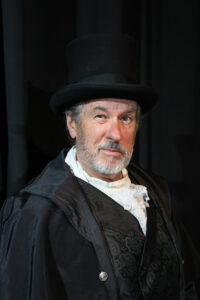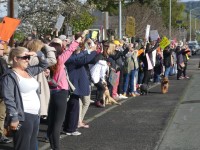One thrift store to rule them all
Sunrise Outlet, a thrift store located in the Fiesta Plaza shopping mall in Boyes Hot Springs that’s affiliated with the Sonoma Developmental Center, is closing.
The Sonoma Development Center, or SDC, is a state residence for clients with developmental disabilities.
SDC spokeswoman Karen Litzenberg said that the store may close around March 31, but added, “We don’t know for sure.”
Sunrise Outlet is the only thrift store left in the Sonoma Valley that isn’t affiliated with the Church Mouse, which is a charity that benefits St. Francis Solano School. The Salvation Army closed its Fiesta Plaza store last year. And Goodwill closed its store on Highway 12 prior to that.
Three hospital
options ‘pencil’
A standing-room-only crowd packed into the auditorium at the Sonoma Community Center Monday night to hear consultant Carl Gerlach compare and contrast the various options to build a new Sonoma Valley Hospital.
So which option was the winner?
To learn that, the public will have to wait until mid-March – after a proposed March 6 parcel tax has gone to a vote.
Gerlach kept alive three options: an in-town hospital with an adjacent outpatient clinic to be built near the current Andrieux Street facility, the Broadway and Napa Road site favored by hospital officials and the privately funded Cirrus Health hospital at Eighth Street East and Napa Road.
“You need to keep all of them open until voter preferences are clarified by survey and (election),” said Gerlach, who works for the Oakland-based HFS Consultants.
Gerlach found things to like and dislike about each of the proposed new facilities. He’ll be available on Saturday to describe the pluses and minuses of each option at a coalition meeting to be held from 10 a.m. to noon at Faith Lutheran Church at 19355 Arnold Drive followed by another coalition meeting from 2 p.m. to 4 p.m. at First Congregational Church at 252 W. Spain St.
Free wine will be available at both meetings.
Gerlach made his presentation at the Monday night meeting of the Sonoma Valley Health Care Coalition.
Steve Pease, one of the coalition’s leaders, told the audience, “Ninety days ago, I don’t think any of us thought there would be three viable alternatives. We have three alternatives, all of which ‘pencil’ (out).”
Hospital CEO, board member step down
Emotions ran high on Jan. 31 as the Sonoma Valley Hospital Board approved a separation agreement with hospital CEO Bob Kowal and accepted the resignation of board member John MacConaghy.
Under a seven-page agreement released that night, Kowal will stay on as a consultant for a year at his current annual salary of $240,000, and Kowal will get $100,000 in final retirement funding, in addition to the $140,000 he had already received during his 3-year stint as CEO.
Hospital board president Richard Kirk explained that Kowal could have sought another year’s pay from the district.
“His contract goes to 2009. He agreed to lop a year of that off,” Kirk said. “It’s an incredibly generous move on his part.”
Kowal told the Sun that the decision to separate was mutual.
During his tenure, Kowal came under criticism for such things as his support for the controversial Measure C ballot proposal to build a new, $148 million facility on a Fifth Street West hayfield owned by the Leveroni family, an unwilling seller. Voters turned it down in May 2006 by a 3-to-1 margin.
MacConaghy mentioned resentment over Measure C as a reason for his resignation.
“On my knees, I beg you stop this opposition,” he told the audience, asking everyone to put aside their differences and “work together with creativity, compassion, wisdom to solve this problem.”
Both MacConaghy and Kowal expressed hope that their resignations might help sway two-thirds of Sonoma Valley voters on March 6 to pass a five-year parcel tax to fund the hospital’s operations until a new facility can be built.
“If the parcel tax does not pass, we will probably have to close the hospital in three months,” Kirk told the audience.
Hotel guests
supporting city
budget
For the third year in a row, guests staying at Sonoma’s hotels pumped more cash into the city’s general-fund budget than any other single source.
Sonoma charges a 10 percent transient occupancy tax on guests staying at the city’s hotels and bed-and-breakfast inns.
This year, this transient occupancy tax is expected to generate $2.4 million, followed by $2.2 million in property tax revenue and $1.6 million in sales tax revenue.
City treasurer Carol Giovannatto called transient occupancy tax “the city’s top revenue generator.”
It keeps rising.
Transient occupancy tax generated $2.3 million in the 2005-06 fiscal year and $2.1 million in the 2004-05 fiscal year.
On Dec. 31, halfway through the current fiscal year, transient occupancy tax had generated $1.3 million – well on its way to the anticipated $2.4 million.




